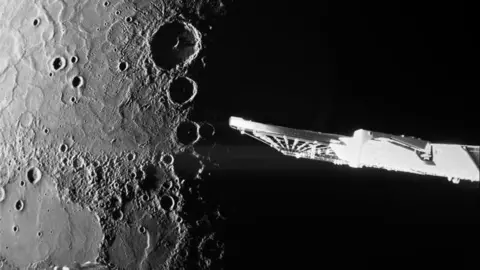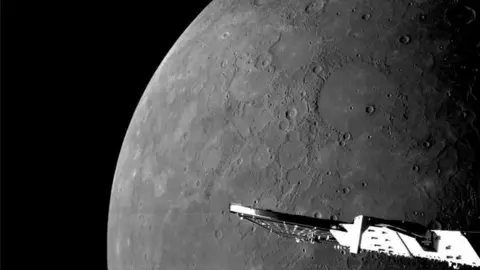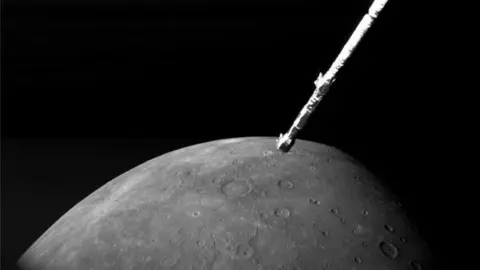 European Space Agency
European Space AgencyA spacecraft built in the UK has captured new images of Mercury as it made its sixth and final flyby ahead of entering the planet’s orbit in 2026.
BepiColombo was built by the Stevenage-based company Astrium, now Airbus, and launched in 2018.
The spacecraft comprises two satellites that will gather data for at least a year, and needs special shielding to withstand the heat from the sun.
Monitoring cameras on the spacecraft captured images of the planet as it flew 295km (183 miles) above Mercury’s surface, including views of the planet’s north poles, as it was lit by sunlight.
 European Space Agency
European Space AgencyBepiColombo will attempt to determine what Mercury is actually made of, and whether water could exist in some of the planet’s deepest craters.
It needed to make nine flybys of Earth, Venus and Mercury before it could reach the right speed to be captured by Mercury’s gravity.
This flyby marks the last time that the monitoring cameras will capture close-up images of Mercury, as the spacecraft module they are attached to will now separate from the mission’s two satellites before they go into orbit.
 European Space Agency
European Space AgencyFrank Budnik, BepiColombo flight dynamics manager said: “BepiColombo’s main mission phase may only start two years from now, but all six of its flybys of Mercury have given us invaluable new information about the little-explored planet.”
Geraint Jones, BepiColombo’s project scientist at the European Space Agency, added: “In the next few weeks, the BepiColombo team will work hard to unravel as many of Mercury’s mysteries with the data from this flyby as we can.”



